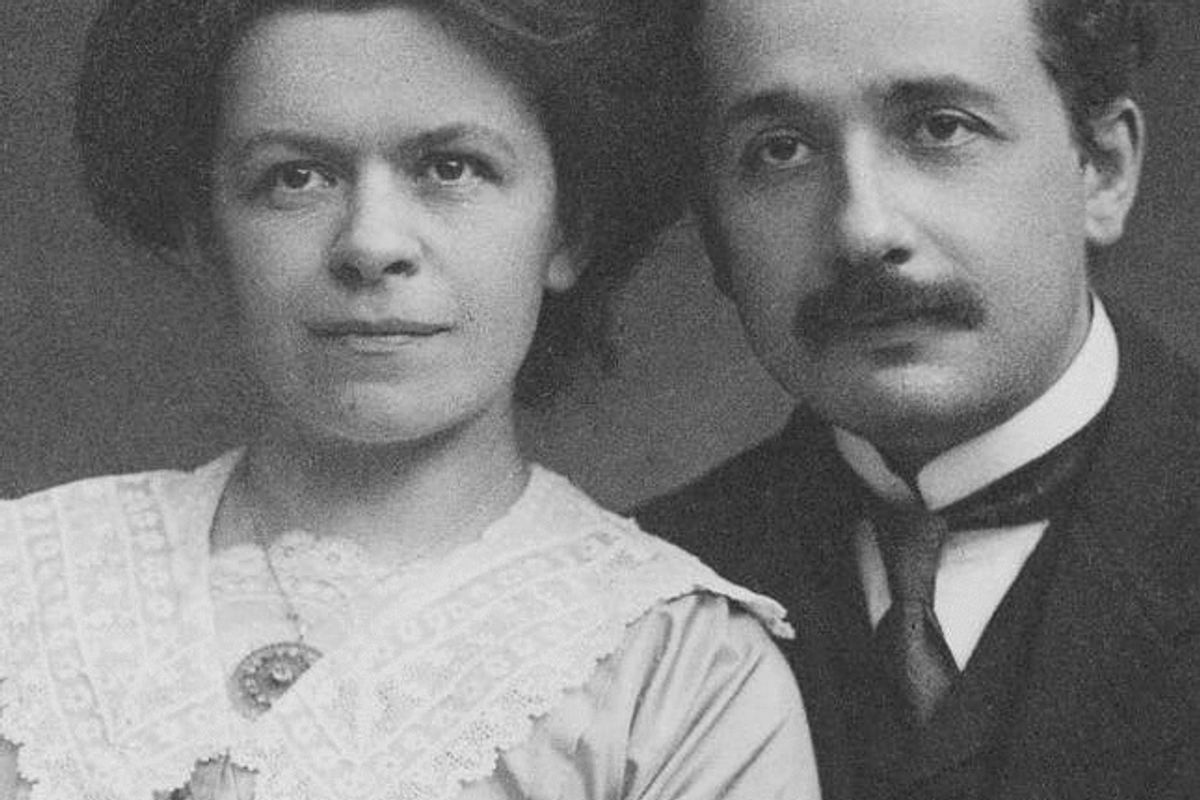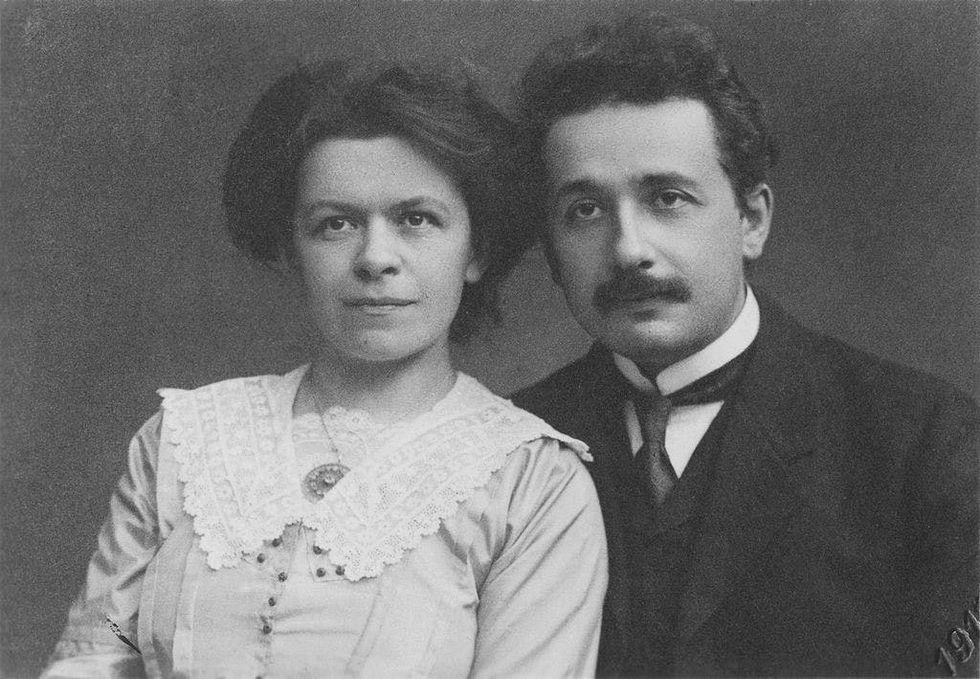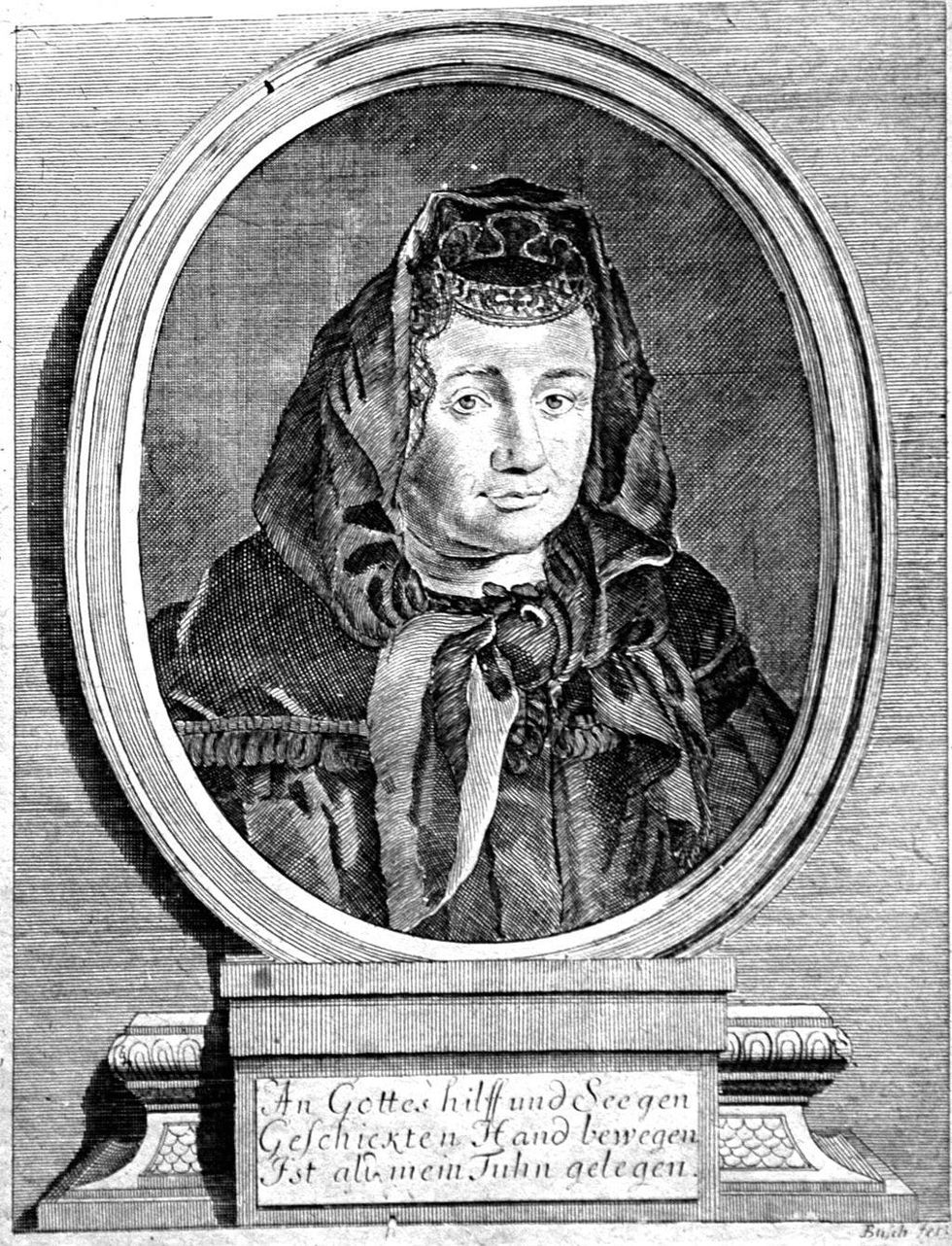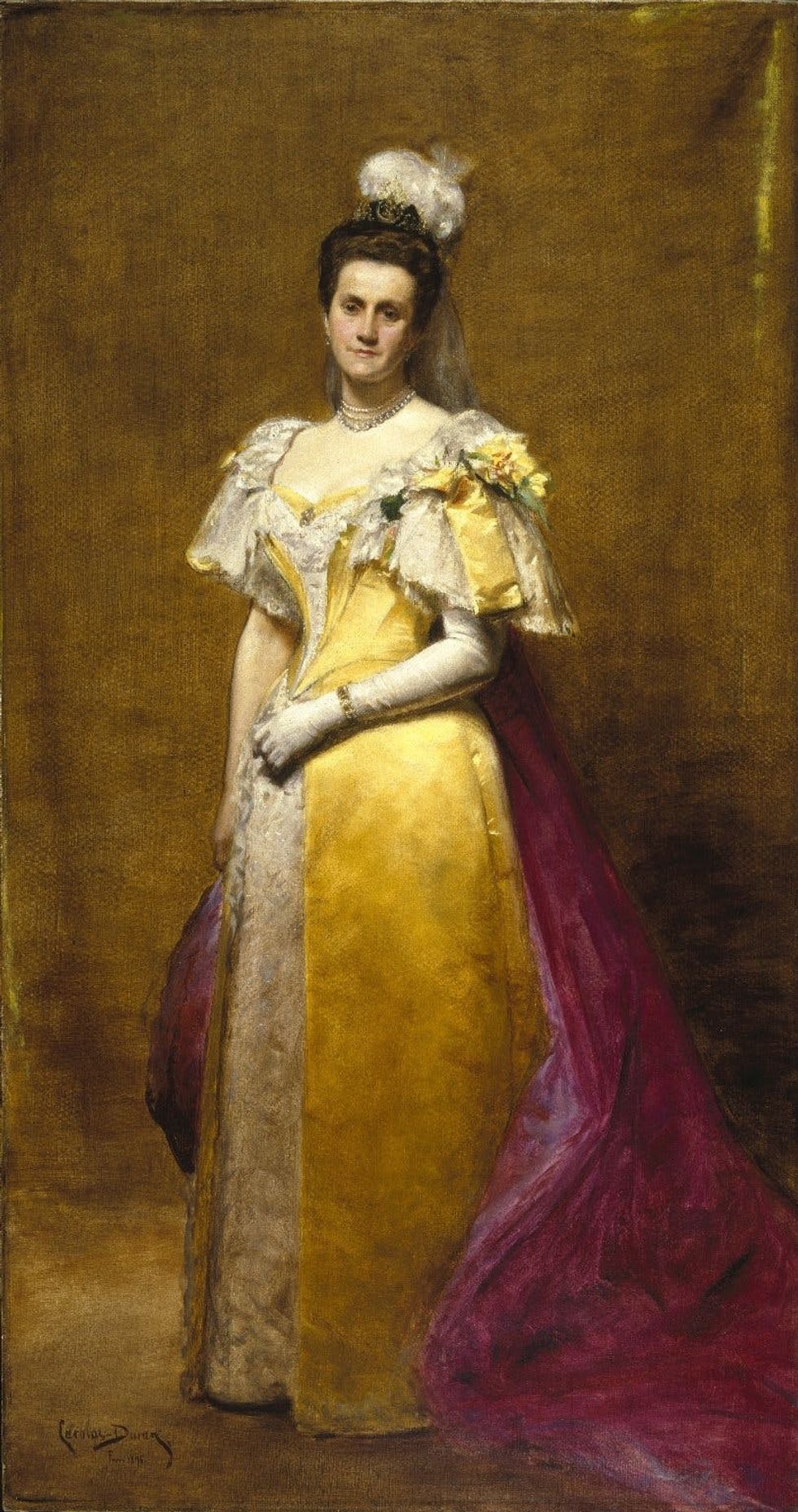10 Women Scientists That History Shouldn't Forget

Although women are making steady inroads in STEM fields, the science and technology world remains dominated by men. According to the National Girls Collaborative Project, fewer than 30 percent of all science and engineering jobs are held by women. Though that figure is certainly better than it was in the past, we have a long way to go in lifting the barriers to science, tech, engineering, and math education that keep so many women out of those fields.
Throughout history, women have had to overcome obstacles to access education, yet many persisted in STEM nonetheless — despite the fact that their work may not always have gotten recognition (or was outright stolen) by their male colleagues. But it's never too late to give these brave, history-making women their due.
Here are 10 women in STEM who were forgotten by history — until now.

Mivela Maric:Albert Einstein is widely regarded as one of the greatest scientific minds in history, but there has been some recent discussion over the role that his first wife, Mivela Maric, played in his success.
People who debate Maric’s involvement in the development of theories attributed to Einstein tend to fall into two camps. On one side, there are those who argue that she was merely a sounding board for her husband’s ideas; on the other, that she was a direct collaborator in his research and even helped create some of what we now consider Einstein’s greatest theoretical works. What’s not up for debate is that Maric was a fierce intellectual whose input Einstein took seriously.
Based on correspondence between the couple, historians do agree that Maric can be credited with working alongside her husband. (Einstein talks of “our studies” and “our theory” in many of the letters.) Despite her intelligence, by virtue of being a woman in the earlier part of the 20th century, Maric’s work has never been fully evaluated, and her role (however ambiguous) in her husband’s work will never be fully understood. Maric died in 1948, and for years was overlooked as a physicist and merely noted for her relationship to Einstein. (Photo via Wikimedia Commons)
Jocelyn Bell Burnell:The name of British astrophysicist Jocelyn Bell Burnell may not be familiar to you, but her 1967 discovery of pulsars changed astronomy forever.
While still a graduate student at the University of Cambridge, Bell Burnell's research into quasars (enormous celestial bodies that emit huge amounts of energy) led her to stumble onto large neutron stars that act almost as smaller-scale quasars — now known as pulsars.
With her male advisor, Antony Hewish, Bell Burnell co-authored a paper on the revelation that would go on to help scientists study many facets of the universe, including the possibility of alien communication. In 1974, Hewish and physicist Martin Ryle won the Nobel Prize in physics for work made possible by Bell Burnell's discovery. Her name wasn't even included in the award.
Since Bell Burnell's discovery, she has been a teacher and researcher and has headed the Royal Astronomical Society. She also served as the first female president of both the Institute of Physics and The Royal Society of Edinburgh. In 2018, she was awarded a $3 million dollar prize for her work on pulsars, over half a century after she discovered them.
Chien-Shiung Wu: Born in China in 1912, Chien-Shiung Wu attended a school founded by her father in Jiangsu Province. As a child, she encountered a biography of chemist Marie Curie (the first woman to receive a Nobel prize, and the only woman to date to win it twice) that sparked her imagination and drive. Wu's grades in school were so impressive, she was invited to attend the National Central University in Nanjing without having to complete the school's usually mandatory entrance exams.
After graduating in 1934, Wu realized she needed to attend graduate school abroad if she wanted to advance in her field. She achieved her Ph.D. from the University of California at Berkeley in 1940 and went on to teach at Smith and Princeton.
Wu was also involved in the highly secretive Manhattan Project — the US government's scientific race to create atomic weapons ahead of its enemies during the Second World War. Although her work was instrumental in developing the atomic bombs the US used in the Pacific theater, Wu subsequently expressed regret at her role in the bombings of Hiroshima and Nagasaki and shared her wish that atomic warheads never be used again.
After the war, Wu remained at Columbia University in New York, where her research on the decay of atoms brought her work to the attention of two colleagues; in 1954, those colleagues were awarded the Nobel Prize in physics for work that could only be verified through Wu's expertise. Wu's research went uncredited.
Her work did, however, earn other awards and accolades over the years. Wu is credited with helping scientists understand blood molecule changes and sickle cell anemia, and she was the first woman to serve as president of the American Physical Society.
Lise Meitner: Austrian physicist Lise Meitner is sometimes credited as “the mother of the atomic bomb," but the scientist actually refused to work on the Manhattan Project. She reportedly declared, "I will have nothing to do with a bomb!" But her work in nuclear science helped pave the way for future discoveries; much like other women scientists, her name was left off the major awards that resulted.
After achieving her doctorate in the early 1900s, Meitner began a 30-year working relationship with chemist Otto Hahn, in which the two collaboratively studied radioactivity using insights from their respective fields. When Nazi Germany annexed Austria, the Jewish Meitner was forced to flee to Sweden to continue her work; once there, she received no support from the Swedish scientific elite, who were hostile to the idea of a female colleague.
Meitner continued her research in spite of rejection from her peers. Along with Hahn, scientist Fritz Strassmann, and her nephew Otto Frisch, Meitner began new tests on uranium in Copenhagen. Eventually, they were able to develop and prove a theory of nuclear fission. But it was Hahn who, in 1945, was awarded the Nobel Prize for this work.
Although the three other scientists who'd worked with Hahn on the discovery were awarded a different award in 1966, the Nobel “mistake" was never formally clarified.
Rosalind Franklin:Biologist James Watson and physicist Francis Crick solved the riddle of DNA in the 1950s, but they couldn't have done their work without the findings of other scientists; notably Rosalind Franklin. The daughter of English socialites, Franklin was given every educational opportunity. At every turn, she was faced with resistance from colleagues, employers, and even her own father — a would-be scientist, himself, who worried about a woman's place in scientific research.
After graduating from Cambridge, Franklin bounced around between jobs in European laboratories, learning cutting edge X-ray techniques. She eventually took a three-year research scholarship at King's College in London.
Utilizing the radiology techniques she'd learned, Franklin and her lab partner, Maurice Wilkins, took some of the first clear images of DNA structures. The story goes that the pair were having a disagreement when Wilkins, without permission, took his research partner's unpublished work to his friends, Watson and Crick. Franklin's images directly informed the two scientists' first models of DNA structure, yet she was completely uncredited in their published work.
It was only after Franklin's death at the age of 37, from ovarian cancer, that Watson admitted her work had been “crucial" to his and Crick's discovery.

Caroline Herschel:Astronomer Caroline Herschel moved to England from Germany in 1772 to join her brother, William, after the death of their father. While the Herschel patriarch had approved of an education for his daughter, the Herschels' mother insisted Caroline leave school to take up housework after her husband's death.
The brother and sister performed together as a musical duo in England, and it was during this period that William became obsessed with telescopes and astronomy. Caroline soon followed suit.
William discovered the planet Uranus in 1781. When William was appointed Royal Astronomer by King George III in 1782, he took his sister along with him.
Caroline worked alongside her brother, for which King George offered her an annual salary as an astronomer's assistant. She was the first woman to discover an unnamed comet and presented findings to the Royal Society that proved the existence of 560 stars omitted from the British Catalogue, along with a list of errors she found in the publication. Her work was so prolific and thorough that two of her astronomical catalogs are still in use today. (Image via Wikimedia Commons)

Justine Siegemund:Midwifery is as old as human history, but until the mid-1600s, the tricks of the trade were passed down orally from midwife to midwife. Enter Justine Siegemund, a German woman who, after suffering excruciating pain from a midwife’s misdiagnosis, began to study the craft herself. Siegemund became so renowned for her expertise that she was eventually encouraged by Mary II of Orange to write a guide on the subject.
Siegemund’s self-published midwifery book, The Court Midwife, became the first German medical text to be written by a woman. With the aid of illustrations by leading medical engravers, Siegemund shared wisdom on life-saving childbirth methods. She’s considered a pioneer in developing techniques to manually turn a breech baby during labor, and using a needle to break the amniotic sac to avoid hemorrhage in cases of placenta previa. (Image via Wikimedia Commons)

Emily Warren Roebling:If it weren't for Emily Warren Roebling, one of America's most iconic structures might not exist. When her husband, engineer Washington A. Roebling took ill during the building of the Brooklyn Bridge (probably from the bends, a disorder common in bridge-builders and deep-sea divers), Emily stepped in to ensure the bridge would be completed.
Though she was not an engineer by trade, Emily took over her husband's role as foreperson, project manager, and go-to during the bridge's treacherous building. Historians today are generally in agreement that without her involvement, the Brooklyn Bridge as we know it would likely never have been built. And she knew it, too.
“I have more brains, common sense and know-how generally than have any two engineers, civil or uncivil, and but for me the Brooklyn Bridge would never have had the name Roebling in any way connected with it!" Emily Warren Roebling wrote to her son in 1898.
After the bridge was complete, Emily Warren Roebling went on to attain a certificate in business law at a time when women were not typically allowed to enter law school and devoted her life to philanthropy. (Image via Charles Émile Auguste Carolus Duran/Brooklyn Museum for Wikimedia Commons)
Which STEM lady do you want to learn more about? Tell us @BritandCo!
This post has been updated.



















